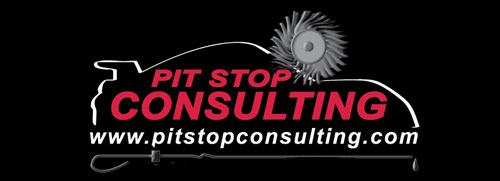Lube techs have many tools to help them do their jobs; many are new, innovative tools that are made specifically for the fast lube industry and have truly made servicing cars faster and more efficient.
However, one of the best tools lube managers and owners have to manage their facility is already there and is underused 99 percent of the time. Sure, you look at the monthly profit and loss statement (P&L) every month, but the real value is often overlooked. The P&L is a very powerful tool.
The necessity of goals
Successful people agree that you need goals to succeed at business and I could not agree more. Goals are absolutely necessary and no goal is useful without a scale with which to measure progress.
So with which kind of goals will a P&L help you? You may have long-term goals, but smaller goals at the store level are invaluable. Managing a successful lube has a lot to do with setting and reaching these small goals, and your P&L statement is a great report card for goals.
Think of your P&L statement as a physical you get for the business every month, much like you get a physical once a year for your body. The whole idea of the yearly physical is to intercept any possible problems that might go unnoticed. The monthly P&L is a timely check-up on the business health of your lube.
Goal formulation
Goals can be formulated from your past information, as well as industry standards in “Cost of Doing Business” surveys in industry and association magazines. Every line item of your P&L should have a goal or norm for reference.
If no goal or target is identified, the numbers become meaningless. Realistically, the P&L statement is only as good as the information that is gathered to put in it, so strive for diligence and accuracy.
Another important piece of the P&L puzzle is that you must put correct line items in it. I typically divide operational areas of a lube into three areas:
1. Cost of Goods (COG) – includes all items used during the service of a vehicle.
2. Labor – with hourly, management, bonuses, taxes, and overtime all having their own line.
3. Sales – with coupons and promotional items having their own line.
Classification
Many other areas with their individual line items are necessary and all outgoing expenses and sources of income need a classification and need to be listed on the P&L. Even things as seemingly minor as trash removal need to be accounted for every month. How else are you going to know when trash service prices go up? You cannot be expected to remember what the monthly cost of trash service is, right?
The P&L is a way of keeping track of those types of month-to-month expenses. It simplifies things for both a quick look, as well as more in-depth research of your companyʼs health.
Lines of communication
As the owner, you can sit down with the manager to discuss each line in depth every month; like it or not, your manager is your business partner. Teaching them what each line item on your P&L means and how you arrived at that number is important.
This brings an ownership mentality to the manager and that attitude is half the battle. It is amazing what managers can do to lower your costs and increase profits if they are simply given the chance.
Is your water bill too high? Your manager has known for months that the toilet needs fixing and runs nearly all the time. How about your electric bill? What better incentive for the manager to take one last look at the thermostat before leaving at night than to give him a bonus based on the numbers on the P&L, including the light bill?
Repairs and maintenance should have its own line. The toilet repair bill might be reduced to cost of parts and the manager doing the labor instead of a $50/hr plumber being called.
Sharing your P&L may not be for everyone, but I know for certain that setting goals for each line item on the P&L and giving it a meticulous examination every month will pay off. Donʼt let your most valuable, but overlooked tool lay fallow; get your hands on it and make it work for you. A carefully thought out P&L can become your best tool for managing the fast lube.

